#mount pirchiriano
Explore tagged Tumblr posts
Text

Sacra di San Michele - ITALIA
#sacra#san michele#abbey#saint michael#abadia#san miguel#mount pirchiriano#sant'ambrogio#torino#turin#piedmont#italia#italy#europe#europa
77 notes
·
View notes
Text
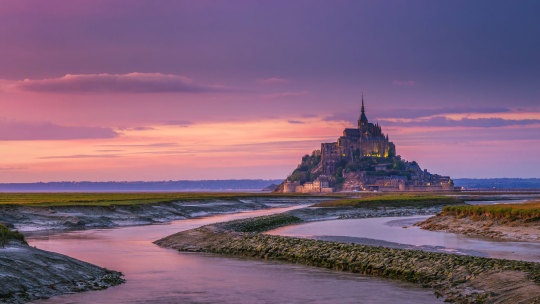

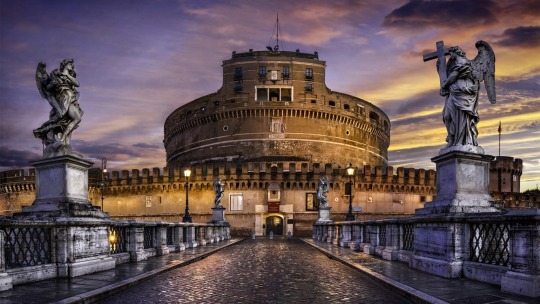
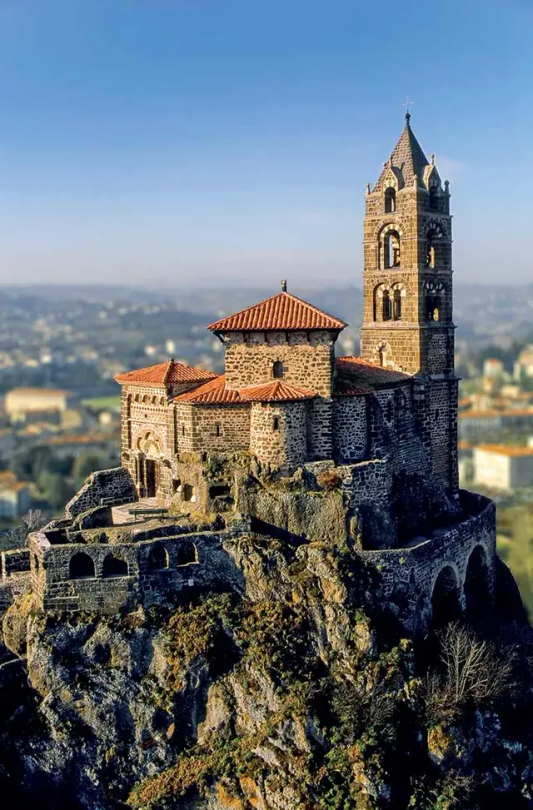
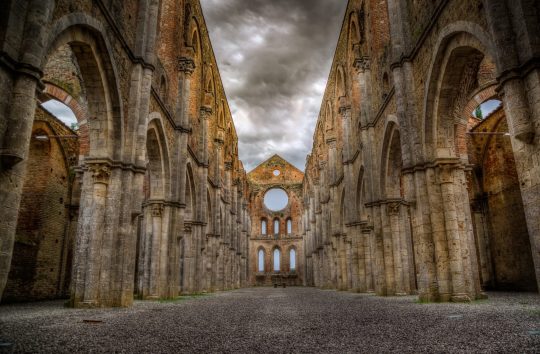
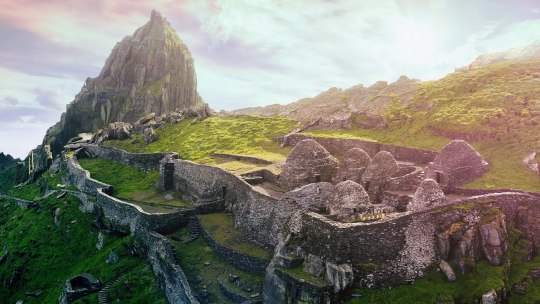


Shrines to St. Michael.
"Mountains figure prominently at the mighty ganglia of the story of Christianity... As Jesus prays atop the holy mountain, the other world intersects with ours as the divine comes down to the human, as the eternal touches the temporal and mortal. And that other world is the ultimate reality, not this one. No wonder that St Michael, ‘Quis ut Deus,’ has his shrines on lofty peaks; no wonder the Celts worshipped on hills and mountains...
The spirit of the Archangel Michael permeates discussion of the world of the Celts—shrines such as Skellig Michael on precipitous mountain-tops in the cold and wet Celtic desert; early connections with the ancient Eastern world; guardianship of Tuscany, Provence, Normandy, and Cornwall; safe-keeping of wanderers and hermits; motifs of spear, sword, and stone; waging of the war in Heaven and the downfall of Lucifer; the communion of the Grail."
St. Michael: Early Anglo-Saxon Tradition, Raymond JS Grant
(1) Mont St. Michel, Normandy, France; (2) St. Michael’s Mount, Cornwall, England; (3) Castel Sant’Angelo, Rome, Italy; (4) Saint-Michel d’Aiguilhe, Le Puy-en-Velay, France; (5) Abbey of San Galgano, Siena; (6) Skellig Michael, County Kerry, Ireland; (7) Sacra di San Michele, Mount Pirchiriano, Turin, Italy; (8) St. Michael’s Tower, Glastonbury Tor, England
#st michael#saint michael the archangel#mont saint michel#st michael's mount#castel sant'angelo#saint-michel d'aiguilhe#skellig michael#glastonbury#glastonbury tor#celtic christianity#celtic#celts
77 notes
·
View notes
Photo

national_archaeology
The Sacra di San Michele, sometimes known as Saint Michael's Abbey, is a religious complex on Mount Pirchiriano, situated on the south side of the Val di Susa in the territory of the municipality of Sant'Ambrogio di Torino, in the Metropolitan City of Turin, Piedmont region of northwestern Italy. The abbey, which for much of its history was under Benedictine rule, is now entrusted to the Rosminians. A special regional law acknowledges it as the "Symbolic monument of the Piedmont region , This monumental abbey served as one of the inspirations for the book The Name of the Rose by Umberto Eco
126 notes
·
View notes
Photo

The Sacra di San Michele, sometimes known as Saint Michael's Abbey, is a religious complex on Mount Pirchiriano, situated on the south side of the Val di Susa in the territory of the municipality of Sant'Ambrogio di Torino, in the Metropolitan City of Turin, Piedmont region of northwestern Italy. The abbey, which for much of its history was under Benedictine rule, is now entrusted to the Rosminians.
A special regional law acknowledges it as the "Symbolic monument of the Piedmont region". This monumental abbey served as one of the inspirations for the book The Name of the Rose by Umberto Eco.
According to some historians, in Roman times a military stronghold existed on the current location of the abbey, commanding the main road leading to Gaul from Italy. Later, after the fall of the Western Roman Empire, the Lombards built a fortress here against the Frankish invasions.
Little is known of the early years of the abbey. The oldest extant account is that of a monk, William, who lived here in the late 11th century and wrote a Chronicon Coenobii Sancti Michaelis de Clusa. He sets the foundation of the abbey in 966, but, in another passage, the same monk maintains that the construction began under the pontificate of Sylvester II (999-1003).
What is certain is that what is now the crypt was built in the late 10th century, as attested by the Byzantine influence in the niches, columns and arches. According to tradition, this building was constructed by the hermit Saint Giovanni Vincenzo, at the behest of the archangel Michael to whom he was particularly devoted; and the building materials which the hermit had collected were transported miraculously to the top of the mountain. In addition, it is noted that the cult of St. Michael, the archangel who warred with Lucifer, typically bases its churches on pinnacles or hard to reach places, for example, Mont Saint-Michel in France.
In the following years a small edifice was added, which could house a small community of monks and some pilgrims.
Later the abbey developed under the Benedictine rule, with the construction of a separate building with guest-rooms for pilgrims following the popular Via Francigena and of a church-monastery (1015–1035), probably on the remains of the ancient Roman castrum. During Easter in 1098, St Anselm, archbishop of Canterbury, visited the monastery to see his nephew Anselm, who was a brother here. The younger Anselm would go on to serve as abbot of St Saba in Rome and Bury St Edmunds in England. Abbot Ermengardo (1099–1131) had a new large, 26 m-high basement built from the foot of the hill to its peak, on which a new church (the one still existing today) was added, including the surrounding structures.
In the year 1315, the manuscript Breviary of San Michele della Chiusa was written containing the prayer cycle of the year for the monks of the Abbey.
The monastery fell into decline and was finally suppressed in 1622 by Pope Gregory XV. It remained abandoned until 1835, when King Charles Albert and the Pope asked Antonio Rosmini to restore and repopulate it. It is currently under the care of the Rosminians.
Daily inspiration. Discover more photos at http://justforbooks.tumblr.com
49 notes
·
View notes
Photo


Understanding the Mysterious Sword of St. Michael
I’ve read a couple of articles on the mysterious Sword of St. Michael — a straight line across Europe of churches and shrines dedicated to the archangel. I first heard about the sword from Gelsomino Del Guercio’s piece from May 31, 2017, “7 Sanctuaries linked by a straight line: The legendary Sword of St. Michael.” [According to legend, the line represents the blow with which St. Michael sent the devil to hell. A mysterious imaginary line links seven monasteries, from Ireland to Israel. Is it just a coincidence? These seven sanctuaries are very far from each other, and yet they are perfectly aligned (siviaggia.it). The Sacred Line of Saint Michael the Archangel represents, according to legend, the blow the Saint inflicted the Devil, sending him to hell. In any case, it is surprising how well these sanctuaries are, in fact, aligned. But the details of such alignment are also astonishing: the three most important sites, Mont Saint Michel in France; the Sacra of San Miguel in Val de Susa; and the Sanctuary of Monte Sant’Angelo in the Gargano are all the same distance one from the other. Some say this is a reminder from the Holy Archangel: the faithful are expected to be righteous, walking the straight path. If all this was not surprising enough, the Sacred Line also is perfectly aligned with the sunset on the day of the Northern Hemisphere’s Summer Solstice (viagginews.com).] Not only are the shrines, centered around monasteries, in a straight line, three of them are evenly spaced from one another. Del Guercio lists the shrines as follows, most of them in high places and many of them on islands:
1. Skellig Michael, an island of the coast of Ireland, settled by Celtic monks. 2. Saint Michael’s Mount, an island off the coast of Cornwall, England. 3. Mont Saint Michel, an island off the coast of Normandy, France. 4. Sacra di San Michele, an abbey built on top of Mount Pirchiriano, Italy. 5. Sanctuary of Monte Sant’Angelo sul Gargano, on top of another mountain in Italy. 6. Monastery of the Taxiarchis, Symi Island, Greece. 7. Stella Maris Monastery, Mount Carmel, Israel.
Del Guercio gives on key clue that may help explain the direct line: “The Sacred Line also is perfectly aligned with the sunset on the day of the Northern Hemisphere’s Summer Solstice.” Del Guercio thinks this makes the coincidence more remarkable, but I think this may be the key fact that helps us to unpack the significance of the sword — rightly named as a sword to signal Christendom’s spiritual combat against paganism.
What is the significance of the summer solstice? Many pagan shrines, most famously Stonehenge, were built to highlight the movement of the sun and moon, and were designed to harness the sun on the longest day of the year, the summer solstice. Were the shrines along the sword of St. Michael, then, originally pagan sites of worship? In fact, the answer is yes. The island in Cornwall was dedicated to Celtic god Lugh (who was also a fighter) and Mont. St. Michel was dedicated to Mithras (a cult of Roman soldiers) and named Tomb Mount. The Greek monastery was built over the site of a temple to Apollo, who was connected to the sun and therefore to the solstice. It seems he also had sanctuaries along the sword of St. Michael. Pagans would have sought out distinctive “high places” that followed the track of the sun on its peak day.
How did each monastery become dedicated to St. Michael? Some of the sites claim an apparition from Michael. He appeared at Monte San Angelo in 490 and 663 and at Mont St. Michel to the Bishop Aubert in 708, instructing him to the build the shrine. Sacra di San Michele is half way between Mon St. Michel and Monte San Angelo and was also built at the request of the Archangel in 983, appearing to the hermit, St. Giovanni Vincenzo. Philip Kosloski relates how St. Patrick saw St. Michael over the island of Skellig Michael as he was exorcizing Ireland. Taxiarchis is home to a miraculous icon of Michael, which is said to have protected the monastery from Muslim invasion (with the archangel even appearing before the enemy).
Other sites may have gained an association to the fighting archangel in the Christian imagination to guard against the influence of the pagan worship previously associated with the sites. The seventh site is the only one that does not connect to Michael (to my knowledge), but Mt. Carmel likewise was a place of spiritual battle where Elijah slew the prophets of Baal. There may be some connection between Elijah and St. Michael as I found a Ukrainian folk legend [Saint Michael the Archangel (Архангел Михаїл; Arkhanhel Mykhail). The supreme angel in Christian belief. Ukrainians shared many of the Christian beliefs about Saint Michael, particularly about his leading role in the struggle against Satan—hence, the name Arkhystratyh Mykhail ‘the Supreme Commander Michael.’ He was believed to have taken thunder away from Satan and handed it over to Saint Elijah. Ukrainians adopted Saint Michael as the patron saint of hunters and the city of Kyiv.] claiming that St. Michael had given Elijah the thunder he took away from Satan.
There is also a connection between the summer solstice and St. John the Baptist. In the ancient world the solstices were June 24th and December 25th, John’s and Jesus’ birthdays of course. The Church Fathers connected these dates to John’s words that Jesus must increase while he decreases, as these are the days that mark the increasing and decreasing sunlight. And indeed, John the Baptist, like Michael, was associated with combating paganism in the early Church. We see one example of this at Monte Cassino.
In St. Gregory the Great’s biography of St. Benedict, he describes how the abbot set up a shrine to John the Baptist to replace one dedicated to Apollo, which had been set in a high place (and probably also connected to the sun):
In this place there was an ancient chapel in which the foolish and simple country people, according to the custom of the old gentiles, worshipped the god Apollo. Round about it likewise on all sides, there were woods for the service of the devils, in which even to that very time, the mad multitude of infidels offered most wicked sacrifice. The man of God coming there, beat the idol into pieces, overthrew the altar, set fire to the woods, and in the temple of Apollo, he built the oratory of St. Martin, and where the altar of the same Apollo was, he made an oratory of St. John. By his continual preaching, he brought the people dwelling in those parts to embrace the faith of Christ. (Dialogues, Bk 2, ch. 8).
Explaining the sword of St. Michael in conjunction with the line of the summer solstice does not explain away the sword’s significance. Rather, it shows its significance as part of the way in which the Church reclaimed important sites and dedicated them to the worship of the one true God. The sun and stars proclaim the glory of God and should not lead to idolatrous worship and human sacrifice (a custom of the solstice).
St. Michael clearly had a role in reclaiming the solstice for the glory of God and removing its connection to the enemy as he himself appeared at many of these sites. In our own fight to reclaim our own country, we should turn to St. Michael (and recite his prayer often) and to St. John the Baptist to guard and protect and to help us in the battle for souls.
By: R. JARED STAUDT __________
O glorious prince St. Michael, chief and commander of the heavenly hosts, guardian of souls, vanquisher of rebel spirits, servant in the house of the Divine King and our admirable conductor, you who shine with excellence and superhuman virtue deliver us from all evil, who turn to you with confidence and enable us by your gracious protection to serve God more and more faithfully every day.
PRAYER TO SAINT MICHAEL THE ARCHANGEL
St. Michael the Archangel, defend us in battle. Be our defense against the wickedness and snares of the Devil. May God rebuke him, we humbly pray, and do thou, O Prince of the heavenly hosts, by the power of God, thrust into hell Satan, and all the evil spirits, who prowl about the world seeking the ruin of souls. Amen..
From: www.pamphletstoinspire.com
18 notes
·
View notes
Text

La Sacra di San Michele è un'abbazia costruita all'incirca nel periodo che va dal 983 al 987 sulla cima del monte Pirchiriano, situato nella Val di Susa, a 40 chilometri da Torino.
È il monumento simbolo della regione Piemonte ed è il luogo che ha ispirato lo scrittore Umberto Eco per il best seller "Il nome della Rosa". Il complesso della Sacra è costituito da diverse strutture ed edifici quali la Foresteria, il Monastero Nuovo, la Nuova Chiesa e la Torre della Bell'Alda che racchiudono all'interno curiosità e misteri. Da questo rudere impregnato di storia e di cultura si lega il mistero della cosiddetta linea magica di San Michele: questa curiosa storia rimanda all'ipotetica esistenza di una linea energetica tracciata dall'Arcangelo Michele che unisce sette basiliche/abbazie dedicate proprio al suo culto che si estende dall'Irlanda alla Palestina passando per Inghilterra, Francia, Italia e Grecia. Tra l'altro, l'Italia è l'unica nazione ad avere sul proprio territorio la presenza di due punti della linea energetica immaginaria: il santuario di Monte Sant'Angelo sul Gargano e proprio la piemontese Sacra di San Michele. 🇮🇹❤👏👋
The Sacra di San Michele is an abbey built approximately in the period between 983 and 987 on the top of Mount Pirchiriano, located in Val di Susa, 40 kilometers from Turin.
It is the symbolic monument of the Piedmont region and it is the place that inspired the writer Umberto Eco for the best seller "The name of the rose". The Sacra complex consists of various structures and buildings such as the Foresteria, the New Monastery, the New Church and the Bell'Alda Tower which contain curiosities and mysteries. The mystery of the so-called magical line of San Michele is linked to this ruin steeped in history and culture: this curious story refers to the hypothetical existence of an energy line traced by the Archangel Michael which unites seven basilicas/abbeys dedicated precisely to his cult which extends from Ireland to Palestine passing through England, France, Italy and Greece. Among other things, Italy is the only nation to have on its territory the presence of two points of the imaginary energy line: the sanctuary of Monte Sant'Angelo on the Gargano and precisely the Piedmontese Sacra di San Michele. 🇮🇹❤👏👋
Grazie: Complimenti a📷@instagram.com/jack_leboswki 💚🤍❤️
0 notes
Text

Sacra di San Michele, Italy 🇮🇹
Sacra of San Michele is an ancient abbey built between 983 and 987 on the top of mount Pirchiriano, 40 km from Turin. From it’s towers you can admire Turin and a breathtaking view of the Val di Susa. Inside the main Church of the Sacra, dating from the twelfth century, are buried members of House of Savoy (one of the oldest royal family in the world). #italia #italy #italygram #italytravel #italytrip #italy🇮🇹❤️ #italy_vacations #italyiloveyou #madeinitaly #italytourism #castlesoftheworld #castlesofeurope #castlesofinstagram #castles_oftheworld #europeancastles #castles #bestcastles #castles🏰 #castlesofitaly #schloß #chateau #chateaux #kasteel #abbey #monastery #alpsmountains #alps #torino #aosta 👉👉👉👉👉👉👉👉👉 👉👉 credits 📸: @italiait
1 note
·
View note
Text

Sacra of San Michele is an ancient abbey built between 983 and 987 on the top of mount Pirchiriano, 40 km from Turin, Italy 🇮🇹
https://www.instagram.com/love__europe
0 notes
Photo

Canon EOS 250D | 35mm | 1/200s | f/13 | ISO 100 Taken on 19/07/2021. The Sacra of San Michele is a truly impressive religious complex built on the peak of Mount Pirchiriano at 962 metres above sea level. Situated on the south side of the Val di Susa, Saint Michael's Abbey (as it's also known) is an iconic symbol of the Piedmont region and a place that inspired writer Umberto Eco to conceive the bestseller 'Il nome della rosa' (the name of the rose). From its tall towers you can take in breathtaking views of the Susa valley and see Turin from afar. Why not pay it a visit? 𝗛𝗼𝘄 𝘁𝗼 𝗴𝗲𝘁 𝘁𝗵𝗲𝗿𝗲: Take a Regional train from Turin to Sant'Ambrogio di Torino and follow the hiking trail that leads to Sacra di San Michele. Or, take the same train but get off at Avigliano. Outside the station there's a minibus that departs for Sacra di San Michele during the summer months. ______________________________________ #SacraDiSanMichele #Italia #Italy #BestItalianSites #Piedmont #Piemonte #MegaPiemonte #Raw_Italy #NoFilter #PiemonteConte #LensCulture #PiemonteConte #Piemonte_Illife #PiemonteOutdoor #WhatItalyIs #WeLiveToExplore #TravelDiaries #Ig_Turin #IgersTorino #TheHub_Piemonte #SiViaggiare_Piemonte #RoadToPiemonte #TreasureItaly #Italia_Dev #MadeInItaly #TravelAndLeisure #OutdoorPhotography #TravelPhotographer #ItalyVacations #TravelgramItalia (at Sacra di San Michele) https://www.instagram.com/p/CWZRElToDHi/?utm_medium=tumblr
#sacradisanmichele#italia#italy#bestitaliansites#piedmont#piemonte#megapiemonte#raw_italy#nofilter#piemonteconte#lensculture#piemonte_illife#piemonteoutdoor#whatitalyis#welivetoexplore#traveldiaries#ig_turin#igerstorino#thehub_piemonte#siviaggiare_piemonte#roadtopiemonte#treasureitaly#italia_dev#madeinitaly#travelandleisure#outdoorphotography#travelphotographer#italyvacations#travelgramitalia
1 note
·
View note
Photo

Directions and path
Hiking Mount Pirchiriano (Val di Susa, Italy)
————————————————–
Find me on Flickr: ludibriaventis
0 notes
Text
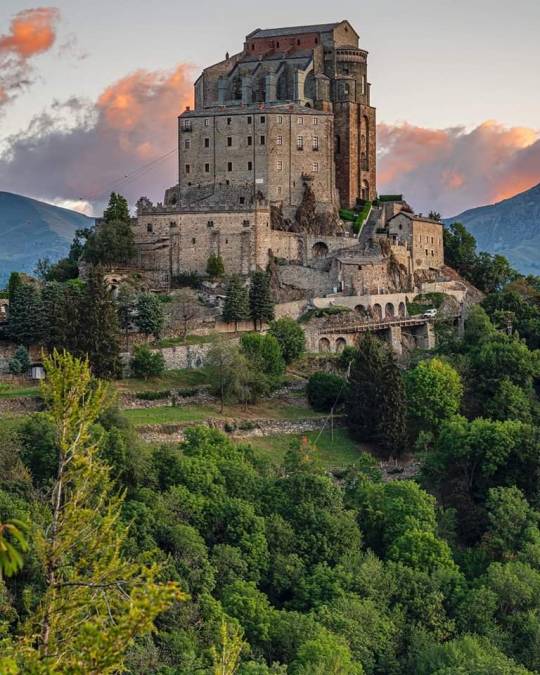
Sacra di San Michele - ITALIA
#sacra di san michele#saint michael#abbey#abadia#san miguel#mount#montagna#monte#pirchiriano#val di susa#torino#turin#piedmont#piemonte#piamonte#italia#italy#europe#europa
96 notes
·
View notes
Photo

The Sacra di San Michele, biblioteca.
The Sacra di San Michele, sometimes known as Saint Michael’s Abbey, is a religious complex on Mount Pirchiriano, situated on the south side of the Val di Susa in the territory of the municipality of Sant'Ambrogio di Torino, in the Metropolitan City of Turin, Piedmont region of northwestern Italy. The abbey, which for much of its history was under Benedictine rule, is now entrusted to the Rosminians.
A special regional law acknowledges it as the “Symbolic monument of the Piedmont region”. This monumental abbey served as one of the inspirations for the book The Name of the Rose by Umberto Eco.
Daily inspiration. Discover more photos at http://justforbooks.tumblr.com
15 notes
·
View notes
Text

Sacra of San Michele is an ancient abbey built between 983 and 987 on the top of mount Pirchiriano, 40 km from Turin, Italy 🇮🇹
https://www.instagram.com/love__europe
0 notes
Text

Sacra di San Michele, Italy 🇮🇹
Sacra of San Michele is an ancient abbey built between 983 and 987 on the top of mount Pirchiriano, 40 km from Turin. From it’s towers you can admire Turin and a breathtaking view of the Val di Susa. Inside the main Church of the Sacra, dating from the twelfth century, are buried members of House of Savoy (one of the oldest royal family in the world).
.
.
#mobicastle #instatravel #instagram #history #world #europe #europetravel #traveleurope #zamki #castillo #burg #chateaux #schloss #castle #castles #sacradisanmichele #italy #italy🇮🇹 #italytravel #italytrip #italygram #italy_hidden_gems #italy_vacations #italytour #italia #monarchy #italia🇮🇹 #medieval #gameofthrones #kingdom
0 notes
Photo

Canon EOS 250D | 85mm | 1/1600s | f/5.6 | ISO 100 Taken on 19/07/2020. Brooding above the road on Mount Pirchiriano since the 10th century is the Sacra di San Michele. This Gothic-Romanesque abbey housed a powerful, bustling community of Benedictine monks for over 600 years and was a staging point for high social-level pilgrims. It has long been the symbol of Piedmont and draws a lot of tourists particularly over autumn and late spring which are the best times of year to climb up to the abbey on foot. 𝗛𝗼𝘄 𝘁𝗼 𝗴𝗲𝘁 𝘁𝗵𝗲𝗿𝗲: If you don't fancy the 2-hour hike from Sant'Ambrogio station, you can get on a shuttle bus from outside Avigliana station instead. Find out the timetables on the Sacra di San Michele website. ______________________________________ #SacraDiSanMichele #SanMichele #IgersTorino #Ig_Turin #Ig_Piemonte #Piedmont #Piemonte #Italia #Italy #Piemonte_Illife #Raw_Italy #RoadToPiemonte #SiViaggiare_Piemonte #MegaPiemonte #PiemonteConte #TurismoInPiemonte #WeLiveToExplore #Italy_Hidden_Gems #ItalyTrip #NoFilter #VerticalShot #Italia_BestPhoto #Italia_Dev #Italia_In_Uno_Scatto #ItalySegreta #ItalyGram #Travel_Europe #TravelItaly #TravellingTheWorld #TravelAddicted (at Sacra di San Michele) https://www.instagram.com/p/CRT8zrtl_zq/?utm_medium=tumblr
#sacradisanmichele#sanmichele#igerstorino#ig_turin#ig_piemonte#piedmont#piemonte#italia#italy#piemonte_illife#raw_italy#roadtopiemonte#siviaggiare_piemonte#megapiemonte#piemonteconte#turismoinpiemonte#welivetoexplore#italy_hidden_gems#italytrip#nofilter#verticalshot#italia_bestphoto#italia_dev#italia_in_uno_scatto#italysegreta#italygram#travel_europe#travelitaly#travellingtheworld#traveladdicted
1 note
·
View note
